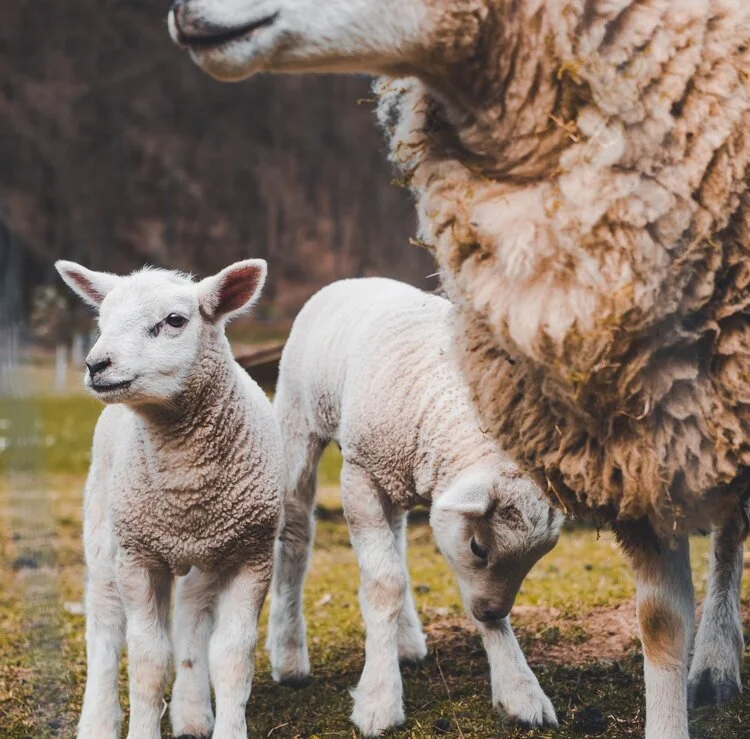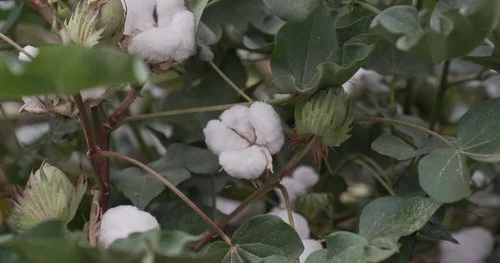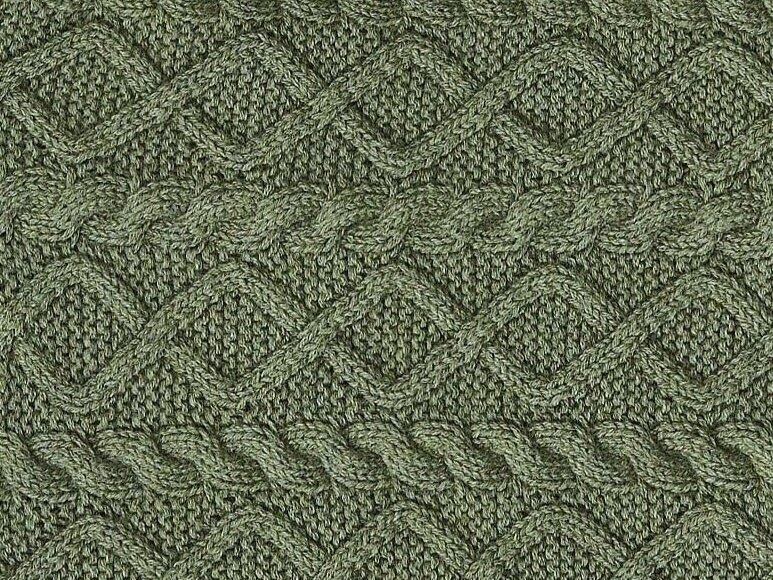Alternatives to wool
Wool from sheep and alpacas as well as cashmere from goats are produced in supply chains which commodify and routinely, ultimately slaughter of sentient beings. With major emissions and biodiversity impacts, choosing alternatives to these animal fibres is a decision to protect life on earth.
The following materials are far more responsible, so long as they come from supply chains that are transparent, considered and fair - which is completely possible for non-animal, non fossil-fuel derived materials.
If you're looking for material innovations still in development, explore our page on wool alternative innovation at CIRCUMFAUNA.
Sustainably sourced cotton
There are plenty of ways cotton can be sourced sustainably. There’s recycled cotton, rain-fed cotton, organic cotton, and cotton grown in a more regenerative way.
Cotton is a plant. It is biodegradable and easy to recycle. It is soft, and can be used to create beautiful knitwear, felted jackets, suiting and so on. It comes in both light and heavy weights.
Cotton farming has developed massively in past years.
Tencel
Tencel is a form of lyocell fabric, meaning it is produced from wood pulp transformed into a cellulose. Unlike other cellulose materials, Tencel is certified to be from sustainably sourced, fast-growing eucalyptus trees - not old growth forest, or other unknown sources.
Tencel is produced in a closed-loop system, so 99% of the water and chemicals used to produce the material are reused. The material is silky smooth and thermo-regulating.
Hemp
Hemp is another plant-based fibre that can be used not only to create knitwear, but also tweed.
Hemp is breathable, sturdy, and doesn’t require the use of pesticides in its growth. It is also land-use efficient, as all plant fibres are when compared to animal-derived materials.
Hemp can be blended with cotton for extra softness.
Bamboo
Bamboo is a fast-growing, hardy plant that does not require the use of pesticides to grow and be healthy. It can be grown with less impact on soil, too.
Lyocell forms of bamboo are the most sustainable, as they are less intensive and require fewer non-recycled chemical outputs than bamboo rayon.
Post-consumer recycled synthetics
Wool and tweed can be replicated with materials made of post-consumer recycled plastics, with garment to garment recycling most environmentally beneficial. These materials help to reduce the huge amount of plastic which already exists and cannot biodegrade.
While these materials require careful washing with use of inventions like the Guppyfriend, a bag that catches microfibre plastics, recycling plays a part in bettering our environment.
Want to keep learning?
-

Wool industry
Wool is a slaughter industry full of hidden cruelty and environmental destruction.
-

Is cotton sustainable?
Cotton is a staple textile of the fashion industry, but is it sustainable?
-

Willow and Claude
A multi-award winning short documentary film created by Collective Fashion Justice.





